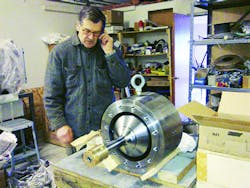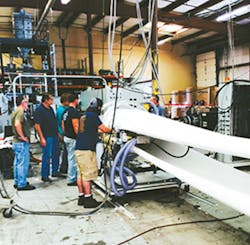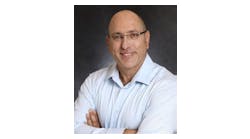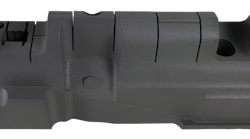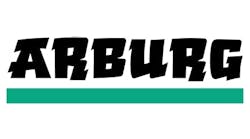In the course of a 44-year career in the plastics industry, Bob Beckwith has been involved with almost every major plastics process. And that's a good thing, he recently observed: "Much of what you learn in one part of plastics processing, you can apply to another part," he said. "And everything I did along the way helped with what I did in foam extrusion," an area where he has made significant contributions, especially in die and injection system designs.
Soon after graduating from the University of Massachusetts Amherst with a degree in mechanical engineering, Beckwith joined Gloucester Engineering in 1972. He quickly became interested in foam extrusion, which became the focal point of his career. In 1985, he moved to Sencorp, a new division of Sentinel Products Corp., heading up the design and manufacture of foam extrusion lines. He stayed with Sencorp after it was spun off as a separate company affiliated with Sentinel for the manufacture of equipment. In 2000, he went back to Sentinel as VP of engineering, working in that position until 2006. Since then, he has been designing and building foam-related machinery independently, winding up his career as a consultant to the foam industry.
Beckwith holds several patents and has contributed to a number of industry firsts in annular die designs for foam extrusion. He recently talked to Plastics Machinery Magazine's senior correspondent John DeGaspari.
How did you become involved in foam extrusion?
Beckwith: I went to work for Gloucester Engineering, which was becoming a big name in extrusion, both blown film and foam lines. That was my introduction to foam extrusion machinery. Very shortly after I arrived there, I got involved with the design and development of injection systems for foam lines. At Gloucester, I became familiar with foam extrusion for various products, mostly for food packaging but also for wrapping materials like polyethylene foam.
What developments have you seen in the gases that have been used as blowing agents over the years?
Beckwith: Injection systems precisely pump, meter and inject gases — commonly referred to as blowing agents — that are compatible with the plastic that it's being introduced into, and that will foam the plastic when it comes out of the die in a predictable way. These are precision machines; they inject the gas at low and very accurate flow rates. They operate at pressures up to 6,000 psi.
You have to find the blowing agent with the right physical characteristics when it blows the foam, and also compatible with the resin itself. That was a challenge. Dies had to be developed that would give them better gauge control of the sheet, and also lower densities, higher densities and so on. We were facing a rash of new packaging products and materials as we were developing our machines.
Most of the gases used for typical packaging products are hydrocarbons. More than 20 years ago, we became more involved with injection systems for carbon dioxide and nitrogen, which could be mixed with hydrocarbons and other blowing agents to reduce the quantity of hydrocarbons used. The only thing was, it made it more difficult to make good foam products, because carbon dioxide — with its higher vapor pressure and lower solubility — made the process more difficult.
What was the state of the foam industry when you were working at Gloucester?
Beckwith: It was well-established by the time I left. A lot of big companies — Mobil, Arco, Owens-Illinois, Sweetheart, Sentinel — were using foam products at that time, mostly polystyrene and polyethylene. It started in earnest around '68; by the time I got to Gloucester in '72, there were quite a few companies making foam packaging products.
I left Gloucester in '85 and joined Sencorp, which was created to manufacture foam extrusion and thermoforming equipment. They hired me to design and build foam machinery that would be sold to any foam producer. I was the head of engineering for that division. We created a team specifically for foam machinery.
At Sencorp, we were faced with a lot of challenges, because of the restrictions on blowing agents and the need to process new blowing agents. We were challenged to meet customer demands for new packaging materials and lower density products. We were also using nitrogen in some products. Customers wanted higher foam outputs from the extrusion line, so we came up with more efficient extrusion systems. They wanted lower densities; we had to be able to process more blowing agent into the foam to make it lower density. They wanted different materials, such as PET and polypropylene foams, which were difficult to process; we developed equipment to do that. The newer resins were always a challenge, because some of them didn't foam very well. The blowing agents were changing, and more scrap and reclaim were being introduced into the extrusion system, making the process even more demanding.
What were some of the important developments taking place in die designs?
Beckwith: We developed our own dies. We made flat dies for the insulation board industry, and for flatter foam sheet products that had densities of about 20 pounds per cubic foot. Below 20 pounds per cubic foot, which covers most of the packaging products, we used annular dies. Annular dies were where a lot of our technology went into; we had to develop dies that gave the producers of foam products more control over sheet flatness, consistent cell structure and the density of the foam.
What was your first major breakthrough in annular dies?
Beckwith: The first major development was the remote die-gap adjustment system. There is a set of die lips at the discharge end of the die, where the plastic comes out. And the gap on that die lip determines certain qualities of the foam sheet as it comes out, and determines the distribution of it into a uniform round bubble that goes over a cooling mandrel that freezes it to stay a consistent foam sheet after you slit it open. The die gap is extremely important, and has to be adjusted frequently to get different products, to accommodate different extrusion rates, different thicknesses of foam, different densities of foam, different blowing agents.
Up to that point, to adjust the die you had to take the bubble down, interrupt the downstream process, and turn a large nut at the end of the die, sometimes with a long cheater bar, that would open and close the die lip.
To reduce scrap and set-up time, we developed a precision high-torque mechanism that opens and closes the die lip while you are running the process. It's an internal system that does not change the design of the die that the foam goes through, and it does not disturb the foam flow in any way. It was built into a cavity that was already at the center of the die. The remote die-gap adjustment system turns the same nut that you were turning outside with a giant wrench. You just stand there on the outside of the die with a little hand crank and a digital readout, and adjust the gap with your fingers using a digital readout that's accurate to within a thousandth of an inch. That allowed people to make very easy and very precise die gap adjustments. We could generate 2,000 foot-pounds of torque at the die nut, through this gear reduction system inside the die.
How have die developments improved the quality of foam sheet?
Beckwith: We developed an axial flex choke system — something that would give you plus or minus 5 percent thickness variation in a typical process. The typical variation used to be plus or minus 10 percent. The axial flex choke system was located in the body of the die, where the foam was moving very slowly, so it is an easy place to make adjustments to the foam flow.
In our design, we use a ring that flexes axially, so you can twist it, and the metal didn't have to distort in other places around the flow. We had a 12-point adjustable choke, and at each point you could flex the ring axially to either lessen or increase the choke area of the gap that the ... plastic is going through before it foams. The system was quite user-friendly and had a quick response as compared to heat-based systems.
What have you been working on most recently?
Beckwith: I have been working on die applications for new materials and products for various customers. Coextruded foam products are relatively new. Traditionally, if people want to laminate layers on foam, they've done it downstream, with another extruder and die, or a lamination process either gluing or heating the sheets. We do it right inside the foam die. So the coextruded sheet comes out with a solid layer on the outside and/or the inside. Adhesion between the layers is guaranteed. It is a tricky process because of different temperature and flow characteristics of the coextruded resins.
We have developed an adjustable die, on which you can adjust certain things while running, to perfect the coextrusion process. Coming into the side of the die is an extruder that forces in the plastic material you want as a layer on the outside or inside of the foam sheet. It's a solid layer maybe from a half a thousandth to 2 thousandths of an inch thick; it's used for strength, for printing, for appearance and so on. The adjustments have been designed to operate on the fly.
People have done coextrusion dies before, but it was hard to make the foam layer accurate and consistent, coming in from the side of the die. Plastic flows in the way it wants to flow, and you have to have ways of directing it. We have a way of adjusting by internal lips and chokes, the passageway so the layers want to flow evenly around the foam. We also introduce the solid plastic on the foam at the right place in the die. With these dies, you have more control over the coextrusion process. We developed the means of doing that in a very small compact area. The layers can be internal or external, or both.
More recently, I have entered into a business agreement with Commodore Technology — a very forward-looking and capable foam company in Bloomfield, N.Y. — to design, produce and sell foam extrusion equipment to customers around the world. They are offering the next generation of dies and extrusion systems in the foam industry.
Do you have a wish list of technology improvements?
Beckwith: My wish list would be driven by the wish list of the customers and end-users. They are the ones that generate the need or the desire for new improvements and being able to use new materials, new polymers. I would say that developments in polymer science are critical to the future. The machine industry will follow the need for new materials or advanced materials and new blowing agents. That's one area that I think should get a lot of attention. Lastly, scrap management and the public perception of foam packaging will continue to be a major challenge.
How would you like to be remembered, either personally or professionally?
Beckwith: I just want to be remembered as one of a very dedicated group of resourceful and hardworking engineers, technicians, salespeople and operators, entrepreneurs and end users, who helped bring the foam industry into the future.


